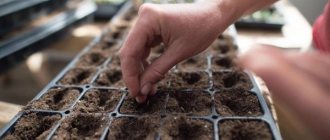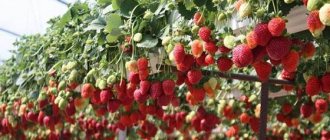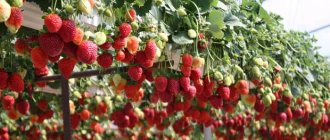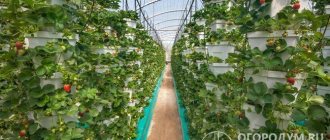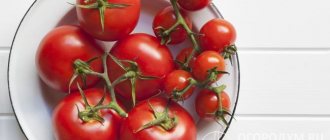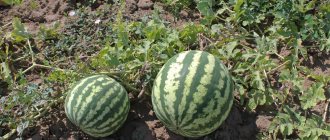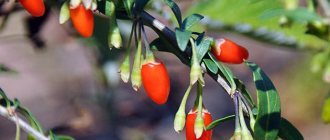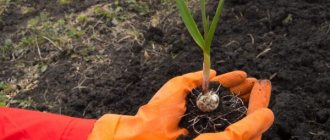Author: Elena N. https://floristics.info/ru/index.php?option=com_contact&view=contact&id=19 Category: Fruit and berry plants Published: July 29, 2015Last edits: November 14, 2020
- Growing conditions
- Reproduction by whiskers (rosettes)
- When to prune
- Diseases and their treatment
Strawberry (lat. Fragaria moschata or Fragaria elatior) is the name of nutmeg strawberry, accepted among scientists since the 18th century. Muscat strawberry, or musky strawberry, or tall strawberry, or Spanish strawberry, or tall strawberry, or garden strawberry, or real strawberry, or European strawberry - how many names this berry has! Since the 20th century, people have mistakenly called strawberries the false berries of garden strawberries (also known as pineapple and large-fruited strawberries), which originate from Chilean and Virginia strawberries, and not from garden strawberries. In Europe, strawberries (garden strawberries) appeared in 1739 as a product of hybridization. It differs from garden strawberries in that it has larger berries. The word “strawberry” is derived from the Russian root “klub”, which means something round, spherical. In fact, it is not so important what you call the berry growing on your site, the main thing is that you care for it properly. We will tell you how to plant strawberries, how to grow strawberries and how to care for strawberries in this article.
Planting and caring for strawberries
- Planting: in autumn (from mid-August to mid-October) and early spring.
- Lighting: bright sunlight.
- Soil: light - loam, sandy loam, chernozem or forest soils rich in organic matter with a pH value of 5.7-6.2.
- Watering: morning, from the end of April - once every 10-12 days, spending 10-12 liters of water for each m² of land. In the summer heat - 3-4 times a week, and from August to October - twice a week. Before flower stalks appear, the optimal way to moisten the soil is sprinkling, and during flowering - drip irrigation.
- Feeding: at least three times a year: in early spring, during budding and in August.
- Pruning: When the leaves begin to turn yellow, become mottled and dry out, prune them.
- Reproduction: by mustaches (rosettes), by dividing the bush. Small-fruited remontant strawberries can be propagated by seeds.
- Pests: strawberry nematodes, spider mites, dusky click beetles, leaf beetles, weevils, snails and slugs.
- Diseases: gray, root and fruit rot, brown, white and brown spots, powdery mildew, fusarium, late blight and verticillium.
Read more about growing strawberries below.
Botanical description
Homemade strawberry, a close relative of which is strawberry, is a perennial herbaceous plant with an erect, pubescent stem 15 to 40 cm high. The root system of strawberry, fibrous and branched, penetrates 30-40 cm deep into the soil. Strawberry leaves are basal, short-petioled, collected in a rosette , large, trifoliate, consisting of ovate leaflets with broadly toothed edges. The upper side of the leaf blade is pubescent, the lower side is densely hairy with protruding veins. In domestic strawberries, there are peduncles, elongated creeping shoots (strawberry tendrils) and shortened annual stems (horns).
Strawberry productivity is determined by the number of horns in the bush and the number of flower stalks on the horn. White flowers in quantities from 5 to 12 are collected in corymbose inflorescences. Strawberries bloom last about three weeks. Strawberry fruits, called berries, are actually an overgrown receptacle, on the surface of which are the real strawberry fruits - small brown nuts. The demand for strawberries is difficult to overestimate. Along with such long-standing and honored inhabitants of our gardens as currants and gooseberries, they have not lost popularity over the centuries, which the recently introduced blackberries and blueberries have yet to earn.
Planting strawberries
When to plant
You can plant strawberries in both spring and autumn. In the fall, it is better to do this from mid-August to mid-September, and then next year you will be able to reap a good harvest. If the root system of your seedlings is closed, that is, it is in containers or cassettes, you can use the transshipment method to plant strawberry seedlings earlier - from mid-July to mid-August. It is better to do this on a cloudy day after rain or watering. In spring, you need to plant strawberries as early as possible, as weather permits.
- 6 common mistakes of beginning winegrowers
The strawberry harvest largely depends on the quality of planting material. You can grow it yourself, and it will cost you less, but this is a very labor-intensive and time-consuming path, because the process will take from one to three years, and the result will be a bush with only one horn. The only advantage of doing this yourself is that you do not have to store the seedlings, and you can plant the seedlings immediately after digging them up, along with a ball of earth, which ensures minimal stress and good survival rate.
But it is best to purchase planting material from well-established nurseries, but do not buy seedlings without soil, with bare roots - they take root very poorly, and you will have to expect a full harvest from them for more than one year. Buy seedlings in containers or cassettes - although this is expensive, it is the fastest and most reliable way to grow a good harvest in the shortest possible time.
Soil for strawberries
Choose a sunny area, protected from the wind, for your strawberries. The soil for growing strawberries should be rich in organic matter. Light loam or sandy loam, as well as chernozem and gray forest soils are most suitable for strawberries; clay soil is the least suitable for strawberries. The occurrence of groundwater is desirable at a level of 60-80 cm, and the pH value is optimal within the pH range of 5.7-6.2. The best precursor crops to strawberries are herbs, cereals, onions, garlic, petunia and marigolds. Strawberries can be grown in one place for 3-4 years, and then strawberries can be planted in the same place only after 2-3 years.
Spring planting
As a rule, strawberries are planted in the fall, but sometimes there is a need to do this in the spring, but you need to prepare the area for spring planting before winter: add 8-10 kg of humus or 5 kg of manure for digging for each m² of soil, 100 g of superphosphate and 50 g potassium salt. Strawberry seedlings for spring planting should be well developed. Before planting, keep the planting material in a cool place for three days. If you did not fertilize the soil with organic matter in the fall, add two or three handfuls of humus and a handful of wood ash to each hole before planting.
The distance between the holes in the garden bed, as well as between the rows, should be about 30 cm, and the depth of the hole should be such that the roots can freely fit vertically into it. When planting, to speed up establishment, the longest root must be pinched. The leaves of the seedlings are also cut off, leaving only 3-4 large leaves on the bush. When planting, the neck of the bush is dug in flush with the surface. You can first pour water into the hole, and only then lower the roots of the seedlings into it, and then gradually fill the hole with soil, compacting it.
Or you can plant the seedlings in dry soil and after compacting the soil, water the seedlings generously. It is advisable to carry out the work on a cloudy day or in the evening, and if you are afraid that sudden frosts may destroy the seedlings, cover the strawberry bed with film.
Planting in autumn
The advantage of planting strawberries in autumn is that next summer you can harvest a good harvest from young bushes, while bushes planted in spring will begin to bear fruit only a year later, if they do not die from return frosts. In early spring, prepare a bed for strawberries by adding fertilizer before digging.
If you don’t have a lot of free space, you can plant early vegetable crops in this bed that will not harm the strawberries - onions, garlic, carrots, celery. A week before planting strawberries, place the seedlings in a cool, damp place. Treat the roots of the seedlings with fungicides. Autumn planting of strawberries is carried out according to the same scheme as spring.
How to choose a place for strawberry beds
To create beds for strawberries, you need to choose a sunny, level place. Strawberries bear fruit well in the sun. A damp area, and even in the shade, is not suitable for it. In such an area, strawberries will suffer from viral or fungal diseases.
High humidity also affects the taste of the berry: it becomes soft, watery, and therefore not transportable.
Strawberry beds should be positioned from east to west so that the bushes receive plenty of sunlight throughout the day.
The best time to plant the crop is August and September. At this time, a large number of planting sockets appear, just choose.
But it is better to prepare the area for planting in the spring and sow it with green manure. Strawberries will grow well after lupine. The grown lupine is mowed down, and the area under the bed is spilled, for example, with Fitosporin.
You can prepare the bed in the summer, after digging out its good predecessors. The best predecessors of strawberries are garlic, onions, legumes, radishes, parsley, celery.
By August, many vegetables ripen, the beds are cleared, and it’s time to plant Victoria. Neighbors can be mint, parsley, legumes, cucumbers, onions, sorrel. It is undesirable to be near fruit trees so that the caterpillars do not attack the Victoria.
Strawberry care
Growing conditions
Growing strawberries in the first year after planting serves one purpose - to provide it with the opportunity to build a strong root system, so it is better to remove the tendrils and peduncles that appear on the bushes. As for older bushes, caring for them in early spring begins like this: at the beginning of the growing season, you need to remove from the area the old mulch under which the strawberries overwintered, remove all old, dry, blackened leaves, and loosen the soil between the bushes.
In the future, caring for strawberries will consist of regular weeding of the beds, loosening the soil, watering the strawberries, treatment against pests and diseases, and fertilizing.
Strawberries during flowering
In mid-May, the first flower stalks appear on strawberries. Proper care of strawberries during flowering is the key to the quality of future berries and their quantity. How to feed strawberries during flowering? During flowering, potassium fertilizers, which are needed by strawberries during this particular period, are added to the soil, as well as humus or ash. To increase the number of inflorescences, strawberries are sprayed with a solution of boric acid at the rate of one teaspoon per 10 liters of water.
It is very important to keep the area clean during flowering, weeding out weeds and loosening the soil so that a crust does not form, preventing the roots from breathing. Before the first fruits ripen, it is necessary to mulch the soil between the bushes. Excess leaves and tendrils, which take away moisture and nutrition from the soil, are removed with pruning shears so that strawberries bear fruit with maximum efficiency.
Watering
If you are interested in your garden strawberries producing large fruits, they need to be well watered, but it is very difficult to strike a balance: giving the plant water and at the same time not over-watering its roots. A lack of water causes the surface root system of strawberries to dry out, and the slightest excess of moisture in the soil just as quickly leads to the appearance of gray or root rot.
- Propagation of roses using the Burito and Trannoi method
When and how to water strawberries? They begin to water strawberries from the end of April. On average, one square meter of strawberry plot requires 10-12 liters of non-cold water, and the frequency of watering in moderate heat is once every 10-12 days. Strawberries in the summer, when the heat sets in, need more frequent watering - up to 3-4 times a week. In August, September and October, if the autumn turns out to be dry, it is enough to moisten the beds twice a week. It is better to water strawberries in the morning, trying to pour water so that drops of water do not fall on either the leaves or inflorescences.
Before flower stalks appear, the best method of watering is sprinkling; to moisten the soil during strawberry flowering, it is more correct to use drip irrigation.
Feeding
Adult strawberries are fed at least three times a year. In early spring, after putting the area in order and trimming the leaves, nitroammophoska is added to the soil in the form of a solution of 1 tablespoon of the drug per 10 liters of water. You can replace the mineral fertilizer with an organic one - an infusion of mullein (1:10) or chicken manure (1:12). Half a liter of solution is poured under each bush. Foliar feeding, consisting of a mixture of microelements - boric acid, ammonium molybdate and potassium permanganate at the rate of two grams of each microelement per 10 liters of water, has an excellent effect on the growth and fruiting of strawberries.
How to feed strawberries during budding and fruit formation? At this time, the crop needs potassium, so ash, an infusion of chicken manure or potassium nitrate are added to the soil. And, as already mentioned, spraying strawberry leaves with a solution of boric acid gives good results. After harvesting and trimming the leaves, add a solution of two tablespoons of nitroammophoska per 10 liters of water to the soil. And in August, strawberries are fed with urea, diluting thirty grams of the substance in ten liters of water - this promotes the formation of flower buds that ensure next year’s harvest. After applying urea, the area is watered.
In addition to all the fertilizers listed, the commercially available special complex fertilizer for strawberries, containing all the elements necessary for the plant, has proven itself well. The use of this fertilizer increases strawberry yields by 30%.
When to replant strawberries
In the fourth year of life, strawberries stop growing, and this leads to a decrease in yield. This is due to the fact that in four years strawberries deplete the soil in which they grow, so they need to change their place every three to four years. It makes sense to replant only strong, healthy bushes that are no more than three years old, and those that are older and will not bear more fruit in a new place - simply remove them. Strawberries are transplanted both in spring and at the end of summer, on a cloudy day.
We have already told you how to choose a good place for a garden bed and how to prepare the soil on the plot, and you also know how to plant strawberries. Dig up a young strawberry bush, carefully shake off the soil from its roots, pinch the roots a quarter of the way, dip them in a manure-clay mash and plant as described in the corresponding section. After replanting, water the bush and cover the soil around the bush with peat or sawdust.
Post-harvest care
We devoted an entire article to the question of how to care for strawberries after harvesting. We invite you to familiarize yourself with this material on our website.
As you can see, growing strawberries in the ground is not as difficult as it might seem, and if you know what to do and when, problems either solve themselves or don’t arise at all.
Useful tips
For good growth and a bountiful harvest, gardeners use some tricks:
- The southwest of the site is the most favorable for strawberries. Let's assume a slope of 2-3 degrees, thanks to this the strawberries will grow faster.
- After nightshade crops, strawberries grow poorly and produce a small harvest.
- A month before planting the bushes, the beds are treated against pests and diseases.
- You need to weed the beds regularly; weeds take away nutrients and reduce the fruiting of strawberries.
Experienced gardeners choose different varieties of strawberries to grow on their plots. Each variety has certain properties, different taste and fruiting period. In order for the bushes to produce a good harvest, they need constant care, which includes proper planting, timely watering, fertilizing, pruning and covering for the winter.
Strawberry propagation
Reproduction by whiskers (rosettes)
During the fruiting period of strawberries, identify developed annual or biennial bushes with the largest berries that are promising for propagation. Select the largest rosettes coming from these bushes, plant the rosettes in a seedling pot and pin them. Leave only the largest mustaches, and remove the remaining creeping shoots connecting the rosette with the bush, as well as the second and third order mustaches. In July, when 4-6 leaves appear on the rosettes, cut off the remaining tendrils and transplant the rosette to a permanent place without shaking off the soil from the roots. Water the bush after transplanting.
Dividing the bush
This method is used to propagate remontant strawberries, which hardly form a mustache. In addition, it is used when there are not enough seedlings. To divide the bush, two- to three-year-old plants with a well-developed root system are used. In autumn or spring, dig up a productive bush and divide it so that each horn has roots and a leaf rosette, then plant the parts.
Seed propagation of small-fruited remontant strawberries
In July or August, collect large ripe berries, cut off the layer with seeds, rub it on a cloth and dry in the sun. Grind the dried mass again, separate the small seeds and store them in a paper bag until planting. In February, soak the seeds for several days in melt or rain water, changing it twice a day.
Before sowing, purchased strawberry seeds are soaked in a growth regulator for several hours. Broken brick is placed at the bottom of the container as drainage, a mixture of two parts of leaf humus with one part of river sand and one part of garden soil is laid out on it, the mixture is moistened and grooves are made in it at a distance of 5 cm from each other. The seeds are scattered to a depth of 0.5 cm, lightly covered and the container covered with glass. You need to keep the container with the crops indoors at a temperature of 20-25 ºC for about two weeks, ventilating and watering the container into a tray daily.
Instead of watering, you can lay a layer of 8-10 cm of snow on the ground. After sprouting, place the container in a bright place. After two weeks, when the first leaf appears on the seedlings, start picking. Very carefully remove the seedling from the soil, pinch the ends of the roots and transplant into pots at a distance of 2-3 cm from each other. In the development phase of 4-5 leaves, seedlings dive a second time according to a 5x5 cm pattern. Before planting in a permanent place, carry out hardening procedures.
- Kohleria - care, photos, types
What materials are comfortable beds made from?
They make beds from everything you can find on your farm. For example, from barrels, boards, tires, slate, bags, plastic bottles, pipes, boxes, bricks, cinder blocks.
Having selected a sample bed, you can begin production.
Strawberry beds made from boards
By constructing beds for Victoria from boards, you give your site well-groomed and neat. You can build a pyramid from the boards or make steps by filling them with soil. A stepped bed can be placed against any wall or fence; it will improve the aesthetic appearance of any building.
Bulk beds for strawberries
Having fenced off a small area with boards, the inside of the box is filled with a nutrient mixture. To make the berries touch the ground less, rows of slats are made. Berries laid on slats remain clean and suffer less.
Strawberry beds from a barrel
The easiest way to make a discount from a barrel. Make holes in a plastic or iron barrel. It is best to cover the inside of the barrel with burlap to prevent the soil from spilling out. Insert a pipe with holes for irrigation into the barrel. Place a large amount of fresh grass and small branches at the bottom, then add nutritious soil. Place Victoria rosettes in the holes. Water from above into the pipe, you get drip irrigation.
Beautiful strawberry beds made of slate
Horizontal beds made of slate are smooth and neat. Slate dug in around the edges will not rot and will retain its neat appearance for a long time. It is very easy to build a slate shed, since this material can be sawed into any shape.
In order for the slate to hold the ground well, you need to drive neat pegs in from the outside. The pegs can be painted with different colors of paint.
Beautiful beds for strawberries made from tires
If you have accumulated a lot of car tires, then you can make a beautiful pyramid out of tires, which will last for many years unchanged. Round ridges will decorate any summer cottage.
The tires are not only placed on top of each other, they are placed in random order. They pour soil into them, paint the outer sides in all the colors of the rainbow, and plant strawberry rosettes inside.
From bags
Strong bags filled with soil turn into beautiful flower beds in skillful hands. The tiered appearance of plantings even gives bags a presentable appearance.
Pour fertile soil with hydrogel inside the bags, make cuts on the outside, and plant Victoria seedlings.
From bottles
Every family collects a bunch of plastic bottles. If you cut off one side of them and fill them with soil with hydrogel, then attach them to a fence or mesh, you will get a unique strawberry bed.
This type of planting is convenient because the net with attached bottles can be attached to any wall or fence. The advantage is easy care and convenient berry picking.
PVC pipes
Unusual beds are made from pipes. In horizontal beds made of PVC pipes you can plant twice as many plants as on the plot. This is confirmed by those summer residents who have already tried this option for planting Victoria.
Strawberry pruning
When to prune
Gardeners still argue with each other whether to trim strawberry leaves after they wilt or not. It’s hard to say which of them is right, but in any case there will be no harm from cutting off old leaves. As soon as you see that they have begun to become stained, yellow, or dry, choose a dry, cloudy morning or evening and start pruning.
How to trim
Use sharp pruning shears or scissors for pruning, but do not try to cut the leaf “at the root” - bushes with stems and cuttings up to 10 cm long should remain in the garden bed. You only need to trim the leaf blades and excess mustache. Bury the young developing rosettes so that they take root. If you are not interested in this type of propagation, cut off the rosettes so that they do not thicken the bed.
Mulching
The bushes are mulched twice a year: in the spring before flowering, so that the flowers do not touch the soil, and closer to the cold for wintering. There are two options for mulching strawberries:
- Organic coating - compost, manure, humus, dry grass clippings. Such substances enrich the composition and improve the structure of the earth.
- Inorganic – stone, polyethylene, granite.
Some gardeners use special mulch paper. This method has its advantages:
- safe method - the material does not contain dangerous paint, which is used in printing houses;
- paper does not rot, prevents fungus, does not allow weeds to sprout and protects against hypothermia or overheating.
Caring for strawberries in autumn
After the strawberry leaves and tendrils have been trimmed, loosen the soil in the area, water it with potassium permanganate and fertilize it. Water the garden bed to keep the soil slightly moist at all times until new foliage grows. If the bush manages to grow leaves, it will not be afraid of even the coldest winter. To protect against severe frosts, cover the strawberries with pine needles.
Details about planting and caring for strawberries in the fall
Shelter for the winter
Strawberries need to be covered in those regions where the winter is harsh, cold, the temperature reaches -20 degrees, but the snow cover is unstable or completely absent. Cover the beds so that the roots do not freeze when regular frosts occur. If it gets warmer, the shelter is taken away so that the bushes do not rot. Small short-term frosts do not harm strawberries; this only hardens them. Gardeners use:
- pine spruce branches;
- agrofabric, agrotex;
- hay;
- straw;
- dry leaves.
Pests and diseases of strawberries
Diseases and their treatment
Unfortunately, strawberries are affected by many diseases and pests. Very often there are complaints from gardeners that strawberries are rotting or strawberries are drying out, and the reason for this is strawberry diseases and pests. The most common diseases are fruit, root and gray rot, powdery mildew, brown, brown and white spots (septoria), jaundice, fusarium, late blight and verticillium wilt.
To avoid these diseases, most of which are fungal, it is enough to follow the agricultural practices for growing strawberries and, first of all, crop rotation. Preventative treatments of strawberries and the plot at the very beginning and end of the growing season play an important role. If preventive measures were unable to protect strawberries from disease, fungicides will have to be used.
Pests and their control
The most active pests of strawberries are strawberry nematodes, mites, leaf beetles, dark click beetles and strawberry-raspberry weevils. Strawberries are also attacked by slugs, snails and red ants. You will read about how these pests manifest themselves and about measures to combat each of them in a special article. But you may never encounter mites and leaf beetles, or see how the weevil dominates strawberries, if you properly care for the berries and carry out preventive treatment of the bushes and the soil around them with insecticides.
Strawberry processing
It is easier to prevent any disease than to cure it. And it is easier to prevent the appearance of pests than to allow their invasion and then fight it. It is in order to avoid a grueling fight against diseases and pests that preventive treatments of strawberries are carried out in early spring, at the very beginning of the growing season, and in the fall, when the strawberry crop is harvested, the leaves and tendrils are trimmed and the plant is preparing for wintering. Various preparations are used to treat strawberries against diseases and pests.
We recommend that in the spring, before the buds swell, remove all the leaves from the strawberries and remove the top layer of soil in the area along with the larvae and pathogens that have overwintered in it, or at least loosen the soil to a depth of 6-8 cm. After this, spray the area with a three to four percent Bordeaux solution liquid or a two to three percent solution of copper sulfate.
Treat the area with the same solutions in September-October, but a little earlier, approximately in the second ten days of September, dilute three tablespoons of burnt vegetable oil, two tablespoons of liquid soap, and two tablespoons of table vinegar in 10 liters of warm water (30 ºC). and wood ash. Stir and strain this solution and treat the strawberry bushes and soil in the area with it.
Optimal timing
In spring, strawberries are planted in open ground, when the ambient temperature for several days in a row remains at 15 degrees Celsius during daylight hours and at least +8 at night. The soil temperature is also measured at a depth of 15 cm - it should not be lower than +10 ℃. A truly warm spring sometimes comes late, in April or even May, so it is impossible to pinpoint specific dates.
The optimal time period for planting is conditionally determined depending on the geographical location of the region, climatic and weather conditions.
Before planting, check meteorological forecasts, choosing non-hot days without precipitation
Be sure to take into account the risk of a sudden cold snap to sub-zero levels. In some areas it is accompanied by the formation of cold night fogs, frost, and snowfall. Such phenomena are especially dangerous for tender, unhardened seedlings grown from seeds at home, not protected by covering material.
Strawberry varieties
Since there are hundreds of types and varieties of strawberries, we cannot tell you about them all, but we offer you an introduction to the most popular ones. Strawberry varieties are divided into early, middle and late according to ripening time.
The most famous early ripening varieties include:
- Alba is a medium-sized, weakly leafy bush with very large shiny bright red conical berries. The variety is resistant to diseases and pests and is grown on an industrial scale;
- Rosanna is a Ukrainian variety with a large number of peduncles, but there are few flowers on them. The berries are large, intensely red, wide-conical or teardrop-shaped, the flesh is also red, aromatic, sweet and sour taste. The variety is resistant to diseases;
- Oso Grand - common in Spain and Florida. The fruits are large, sweet, dense;
- Evangelina is a Scottish variety of very early ripening with large conical oblong fruits of light red color and good taste. Affected by root rot and verticillium.
Medium ripening strawberries are represented by the following varieties:
- Vegera - spreading bushes, vigorously growing, large round-conical berries, dark red, aromatic, sweet taste with a strawberry aftertaste;
- Present - tall, heavily leafy, spreading bushes with very large, sweet dark red berries. The variety is resistant to drought and disease;
- Vebenil is an English variety of medium-late ripening with tall bushes and very beautiful spindle-shaped bright red berries of excellent taste. Fruits abundantly;
- Symphony is a mid-late variety with well-leafed bushes and hard leaves, large bright red conical berries of excellent taste. The variety is frost-resistant, not affected by gray rot and verticillium.
Late ripening strawberries:
- Pensioner Chelsea is truly a masterpiece of selection with juicy, tasty dark red berries, low but wide leafy bushes;
- Great Britain - a late large-fruited variety with low powerful bushes, hard leaves and thick tendrils. The berries are juicy, sweet and exceptionally large. Does not like drought;
- Profuzhen is a dessert variety of French selection, bears fruit from the end of May to the end of October with elongated conical aromatic berries of bright red color and excellent taste. Forms few whiskers. Resistant to diseases, but susceptible to ticks.
And finally, remontant varieties, or day-neutral varieties:
- Ada - begins to bear fruit simultaneously with mid-season varieties, the second fruiting occurs from August until frost. The berries are elongated, bright red;
- Queen Elizabeth is one of the sweetest varieties with large fruits. Frost-resistant, almost not affected by diseases, highly productive, but rarely forms mustaches.

